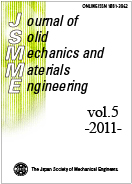Volume 5, Issue 2
Displaying 1-5 of 5 articles from this issue
- |<
- <
- 1
- >
- >|
Papers
-
2011Volume 5Issue 2 Pages 64-74
Published: 2011
Released on J-STAGE: February 25, 2011
Download PDF (375K) -
2011Volume 5Issue 2 Pages 75-89
Published: 2011
Released on J-STAGE: February 25, 2011
Download PDF (1143K) -
2011Volume 5Issue 2 Pages 90-103
Published: 2011
Released on J-STAGE: February 25, 2011
Download PDF (402K) -
2011Volume 5Issue 2 Pages 104-116
Published: 2011
Released on J-STAGE: February 25, 2011
Download PDF (1694K) -
2011Volume 5Issue 2 Pages 117-127
Published: 2011
Released on J-STAGE: February 25, 2011
Download PDF (453K)
- |<
- <
- 1
- >
- >|
